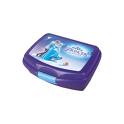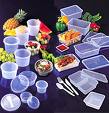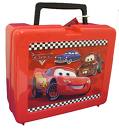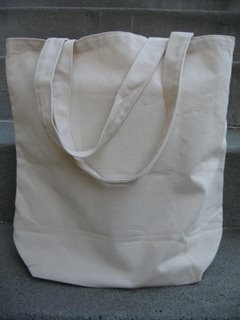 Do you remember when lunch boxes were made of metal, or you simply carried your lunch in a paper bag? These days, kids everywhere seem to be carrying their lunches in plastic. Plastic lunchboxes are colorful, lightweight, and don’t rust.
Do you remember when lunch boxes were made of metal, or you simply carried your lunch in a paper bag? These days, kids everywhere seem to be carrying their lunches in plastic. Plastic lunchboxes are colorful, lightweight, and don’t rust.
Some plastic lunchboxes close tightly, making sure no liquid leaks out.

They come in all sizes, too, so you can customize the container for your child’s (or your own) needs on any particular day.
So why aren’t we celebrating? One word: plastic. Plastic lunchboxes are reusable, of course, but reducing waste is not the only issue when it comes to reducing plastic pollution.
The Center for Health, Environment, and Justice (CHEJ) just released their “Back-to-School Guide to PVC-Free School Supplies”: http://www.chej.org/publications/PVCGuide/PVCFree.pdf.
They point out that many of our children’s supplies, including backpacks and binders as well as lunchboxes, are made out of PVC (polyvinyl chloride). CHEJ calls PVC “the poison plastic” because it’s toxic in manufacture, in use, and in disposal.
Here’s what they have to say: “Cancer-causing chemicals that contaminate the air and water of surrounding communities are used to produce PVC. When PVC is manufactured or burned, numerous dioxins are formed and released. Dioxins are a highly toxic group of chemicals that can cause cancer, and harm the immune and reproductive systems. These and other toxic chemicals released during the PVC lifecycle contaminate our bodies and may pose irreversible life-long health threats.”

They go on: “PVC is unique among plastics because it contains dangerous chemical additives. These harmful chemicals include phthalates, lead, cadmium, and/or organotins, which can be toxic to your child’s health. What’s worse is the danger these chemicals pose — phthalates and other toxic additives can leach out or evaporate into the air over time posing unnecessary dangers to children. Over 90% of all phthalates are used to soften or plasticize PVC products.”
Wow! We’re making children’s daily articles out of materials that can leach harmful chemicals into the air or children’s food? Suddenly those brightly colored lunchboxes don’t look so cheery.
 Like the smiling face of a character selling fast food (concealing the attendant high calorie count, low nutritional value, and agricultural pollution), the characters, motifs, and logos on our children’s articles begin to look less wholesome.
Like the smiling face of a character selling fast food (concealing the attendant high calorie count, low nutritional value, and agricultural pollution), the characters, motifs, and logos on our children’s articles begin to look less wholesome.
What can we use instead? The first and last technology will always be inspired human thinking. If we use our heads and our hands, we will surely come up with alternatives that are safe. But if you’re having trouble coming up with ideas in time for the new school year, do read CHEJ’s report: http://www.chej.org/publications/PVCGuide/PVCFree.pdf. It’s 13 well-written pages, with more background on PVC, and suggestions we could all use.
Here’s to a plastic-free world!
Picture credits:
1. made-in-china.com
2. abcpack.co.nz
3. chinahuayu.cn
4. greatgiftsandtoys.com
5. Amelia Spilger, Marin Farmers’ Market, www.MarinFarmersMarkets.org

